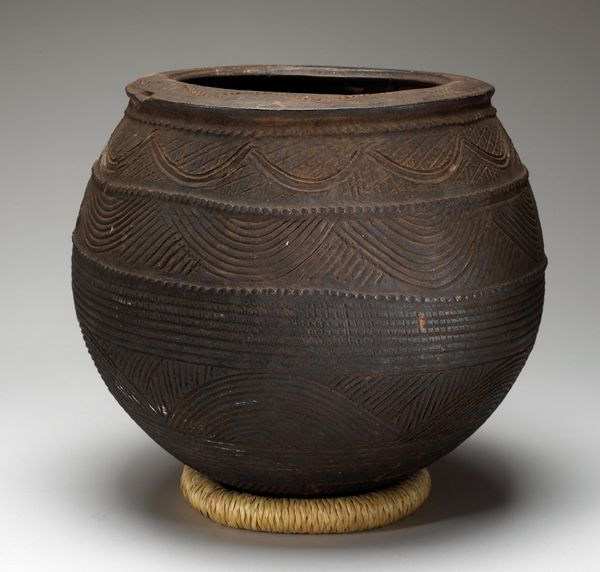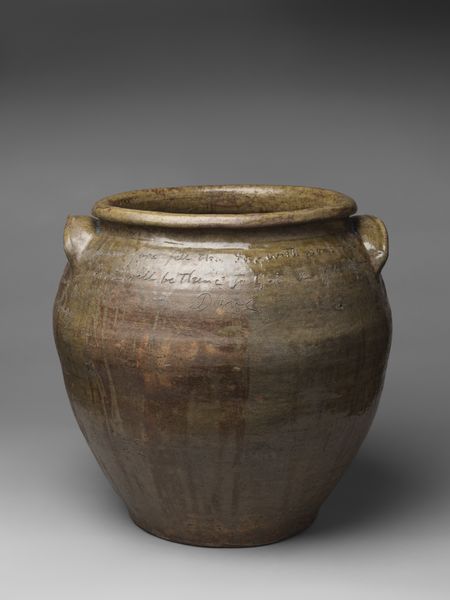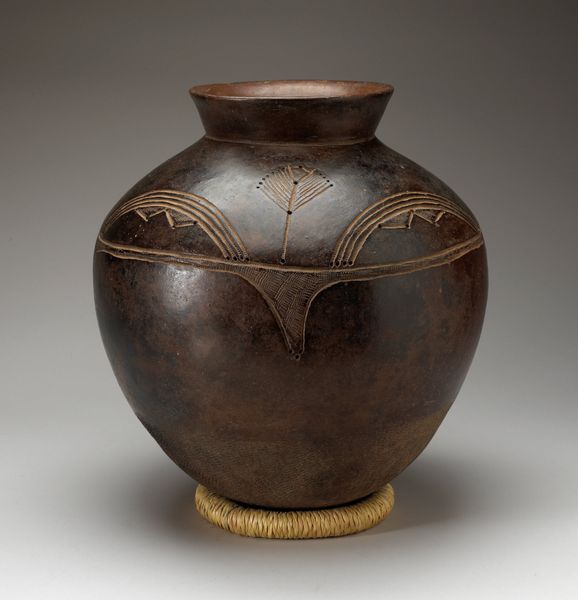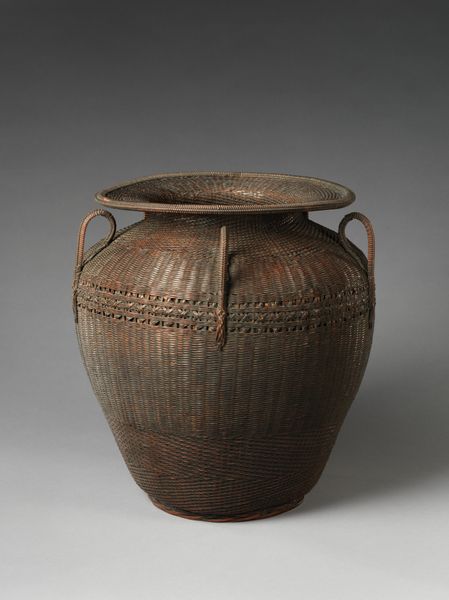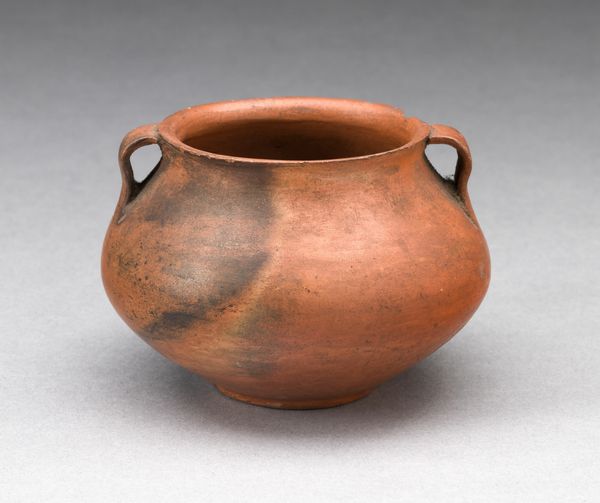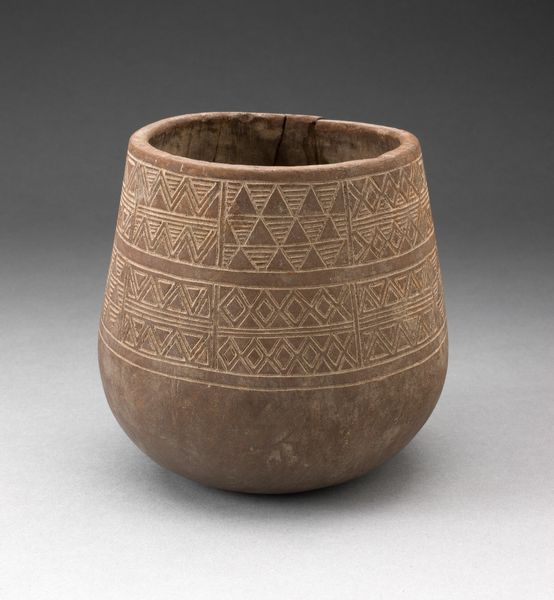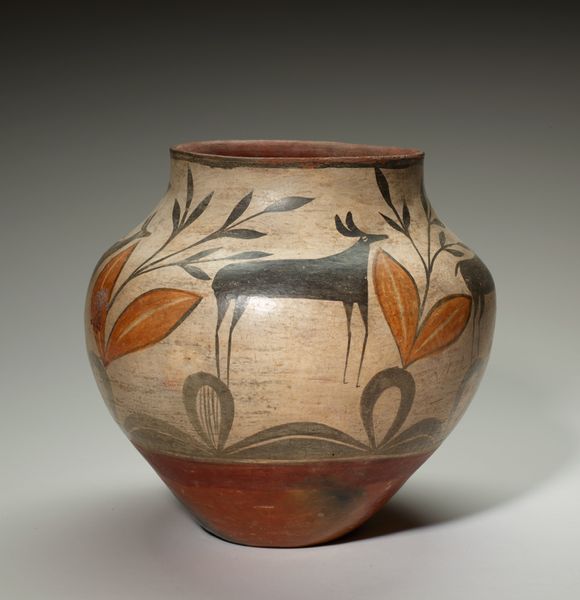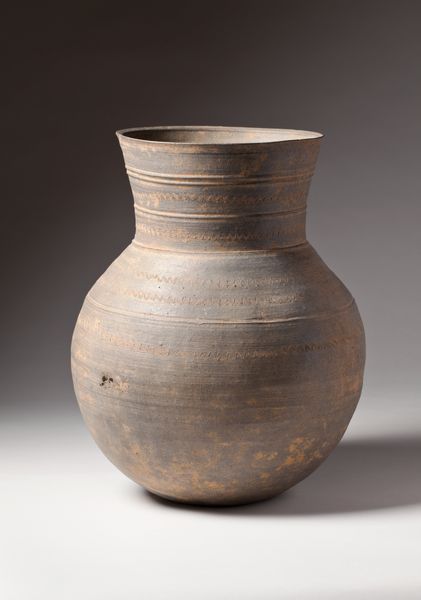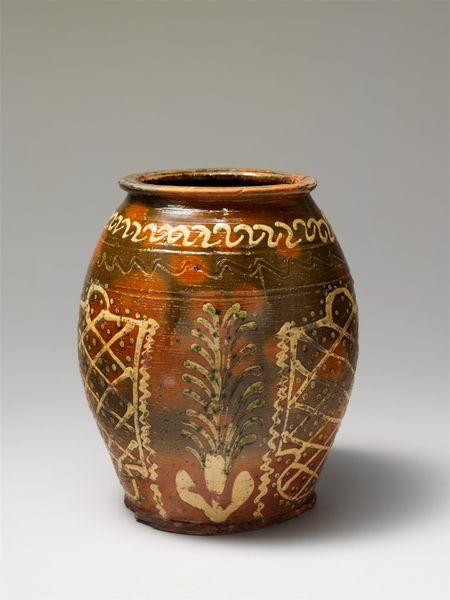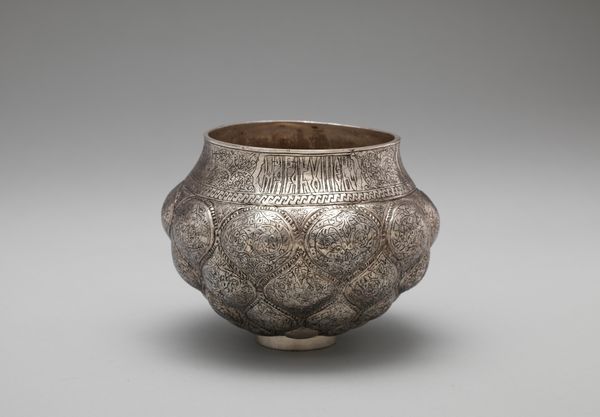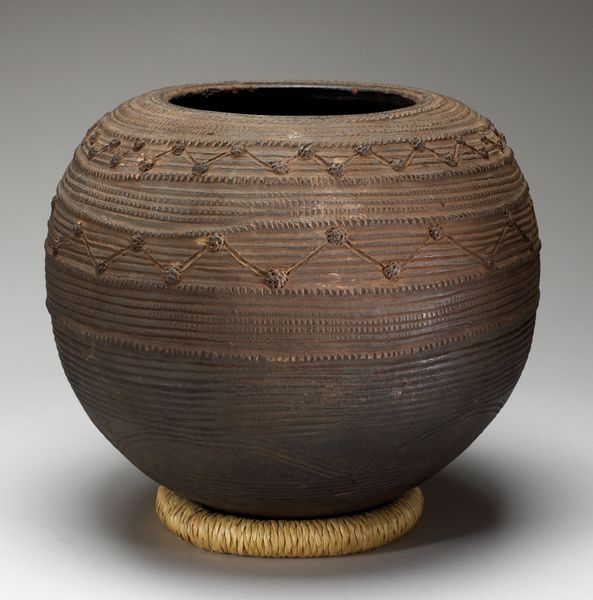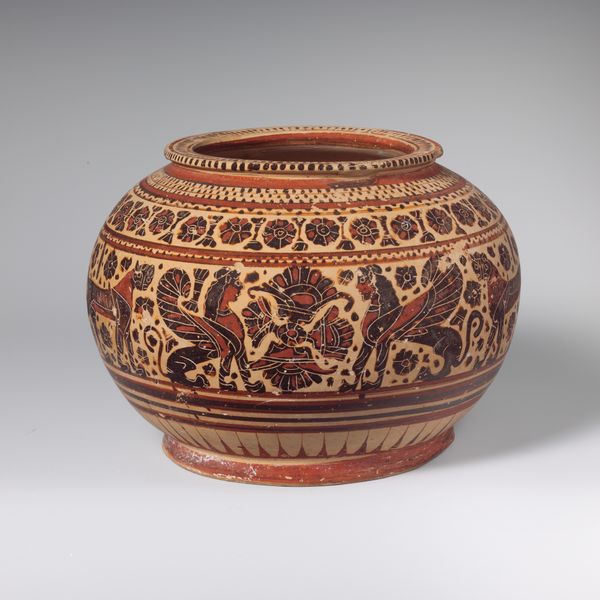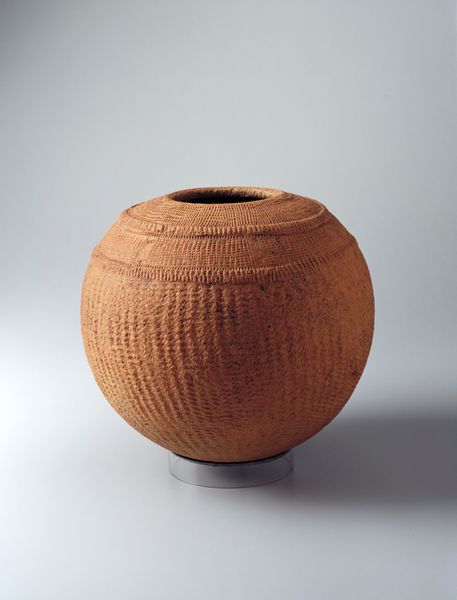
ceramic, sculpture
#
ceramic
#
stoneware
#
sculpture
#
ceramic
#
decorative-art
Dimensions: Height: 3 15/16 in. (10 cm)
Copyright: Public Domain
Curator: Alright, let's discuss this fascinating stoneware tankard, crafted sometime between 1695 and 1705, and attributed to John Dwight. It’s currently part of the Metropolitan Museum of Art's collection. What are your immediate impressions? Editor: My first thought is the way light must play through the openwork. It gives it such a whimsical, almost theatrical quality. A drinking vessel designed as a stage. Curator: Exactly! The pierced floral and foliate designs create such dynamic interplay between light and shadow. The cylindrical neck also offers an interesting contrast with the body, segmented into this banded rhythm. Editor: Yes, those bands do feel almost architectural, a column supporting... well, whatever potent potable it would hold. The floral elements themselves, they feel both delicate and a little feral. Do you feel there is a specific meaning we can derive? Curator: Given the period, a general appreciation for nature would suffice. The cuts made to realize the floral patterns speak volumes about the skills involved. They could represent specific symbolic plants, perhaps connected to prosperity or love, but without direct evidence, such readings would be purely speculative. However, the deliberate piercing undeniably elevates it beyond mere functionality. Editor: It's a transformation of a functional object into something... expressive. Did stoneware commonly feature this decorative style at the time? Curator: Dwight was somewhat unique for pushing the boundaries of stoneware production in England. He really took what was often a utilitarian material and turned it into high art. Editor: The color too, this deep, earthy brown—it feels so grounding, so elemental. I am really moved by the skill and attention he demonstrated by pushing those boundaries. Curator: It offers such a potent link to both earth and ingenuity. It transforms what one might consider an ordinary material and imbues with poetry. Editor: Well, I know that next time I'm thirsty, I’ll definitely be thinking about drinking vessels with a theatrical flair. Thank you for the insight. Curator: My pleasure. It's always rewarding to reflect on how artists transform the everyday into something quite extraordinary.
Comments
No comments
Be the first to comment and join the conversation on the ultimate creative platform.
